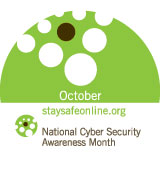
Image via CrunchBase
What is Phishing?
Phishing is a method used to get you to click on a link. Once users click the link, the user is redirected to another page. This page looks like an official page. For example, a Twitter phishing link often takes the user to an official-looking Twitter log in page. Once there, Twitter users log in. The pirates now have your Twitter account name and password.
The Tease
One of the most popular Twitter phishing tease links asks the question: Is this you? This tease works because no-one wants anything bad about them being plastered all over the Internet. It is only natural to quickly click the link and find out if it is you.
Not Too Late To Stop
If you follow the knee-jerk reaction to click the link, it's not too late to stop. Do not fill out any information on that page. Quickly exit the page, and shut your computer off for a bit.
Oops I Filled Out the Information
Anyone can automatically begin filling out the information. Perhaps, you even filled out all the information. It's not time to panic. Take a deep breath and realize that the reason Twitter phishing works so well is many users fill out the information. The key is to focus on the following tips and undo the damage that has been done.
Run Cleaners
When you log back into your computer, run the cleaners. Do a spyware search and empty the cache. Once everything is checked and cleaned, the key is to reboot your computer.
Change Passwords
Reset your passwords to your accounts, when you return from the reboot. This will help to protect your private information. Remember to always change your passwords frequently. Use passwords that have at least one character symbol, one number and one capital letter in them. This will make the passwords more secure and harder to crack.
Avoid Online Banking
Avoid using your online banking information and websites for several days if you filled out the Twitter phishing information page. This will further protect you by having your information filter to the bottom of the pile. Plus, having changed your passwords will make your accounts safer. Never use the same password you use for Twitter for your other accounts online, including email or banking.
Bottom Line
Try to avoid clicking links that ask if it is you in them when they pop-up on your Twitter account. If you fill out the information, act quickly to stop Twitter phishing for your personal information. Most importantly, remember that many of us have been victims to phishing. Use Twitter and the Internet wisely to protect yourself from Twitter phishing pirates.

October is designated as National Cyber Security Awareness Month
As an official endorser of this important event, watch for more tips, resources and articles on fraud and cyber crimes throughout the month. I take a strong stand in favor of scam awareness education and preparedness to help limit your exposure to potential cyber crimes and fraud. Find much more info on cyber security here.


 NEWSLETTER SIGN UP
NEWSLETTER SIGN UP SUBSCRIBE
SUBSCRIBE CONTACT
CONTACT

















Leave a comment